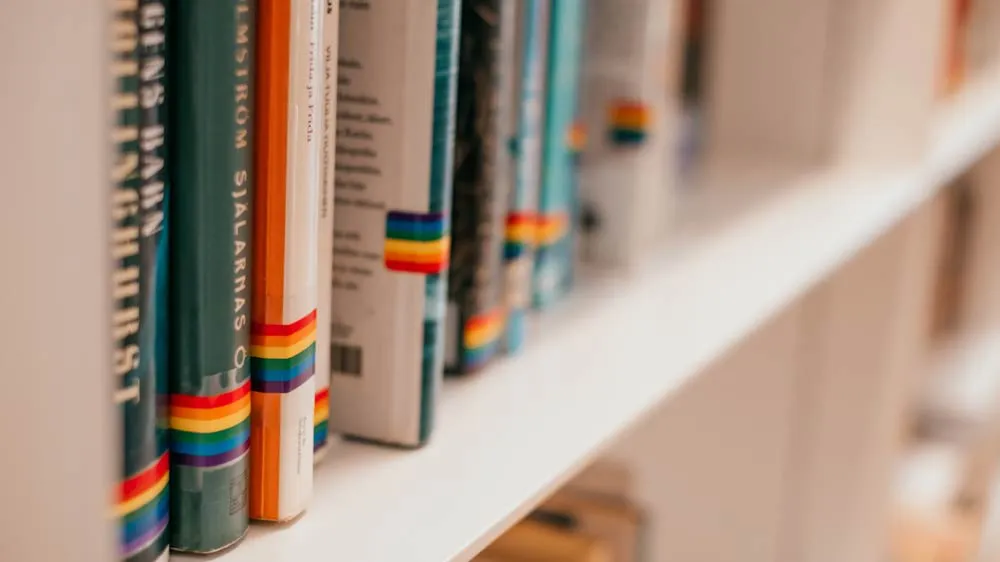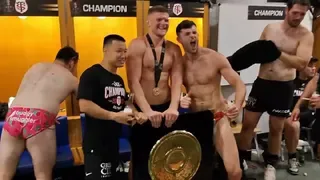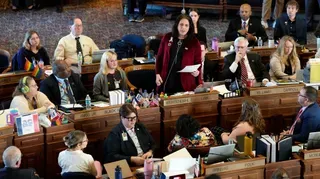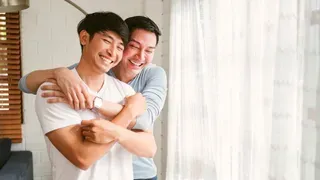July 28, 2010
DC pushes female condoms to fight HIV epidemic
Kilian Melloy READ TIME: 4 MIN.
Charlene Cotton will talk to anyone about sex. Several days a week she stands behind a table decorated with a bowl of flavored condoms and safer sex pamphlets, calling to women passing on the street, "Come check out my table. Don't be scared."
She asks: "Have you heard of the female condom?" Then, to show how it works, she picks up her demonstration kit - a condom and anatomical models.
It's a seemingly awkward conversation to have on a city street, but Cotton isn't embarrassed. She's part of a citywide effort to promote female condoms in the hope they can help stop the spread of HIV in Washington, which has one of the highest infection rates in the country.
Community groups are handing out 500,000 of the female condoms, flexible pouches that are wider than a male condom but similar in length, during instruction sessions at beauty salons, barber shops, churches and restaurants.
CVS is selling them in all its District of Columbia drugstores - though sales so far are slow - making Washington the only place where people can get them outside a health clinic or community group. And city officials are starting another promotion: a website and posters on 460 buses, about a third of the city's fleet.
The ads, which feature a cuddling couple, a female condom package and the words "Get turned on to it," will run for three months and again in the spring. "The female condom with pleasure points for her and him - to tease, please and protect. Go on, give it a try," the ad urges.
"Everybody is doing a full-court press," said Mary Ann Leeper, who heads the introduction of the condom in the U.S. for Female Health Co. of Chicago, the sole manufacturer.
The question is if better access means women will use the condoms. It's a crucial question in Washington, where a 2009 study found about 3 percent of the city's population over the age of 12 has HIV or AIDS. That's a severe epidemic, according to the federal Centers for Disease Control and Prevention, which considers an epidemic "severe" when more than 1 percent of residents are affected.
After the study's release, the city's health department came up with the female condom outreach plan and The MAC AIDS fund gave a $500,000 grant to get it started. Five community groups are now participating in outreach.
The city isn't the first to distribute female condoms, but its campaign is the broadest. New York City has been giving out female condoms since 1998, and community groups there gave away some 930,000 last year. But only an older version of the condom is sold in a few stores outside Washington.
The U.S. Food and Drug Administration approved female condoms in 1993, though they have never been widely available in the U.S. Leeper estimates that only 1 percent or 2 percent have tried them.
That's in part because the original version wasn't popular. Users complained about the price, about $3.60 for a single condom. Others said the material, polyurethane, reminded them of a doctor's examination glove and sounded like a plastic bag crinkling when used.
About a year ago, however, the FDA approved a new version of the condom called the FC2. Made of a synthetic material called nitrile, it is less expensive - about $2 each - and not noisy.
Still, it is more expensive than a traditional male condom, and many women seeing it for the first time are intimidated by its size or uncomfortable with the idea of inserting it. Advocates are trying to help women get over the hurdle of, "You want me to put what, where?"
Their pitch goes like this: A female condom is as effective as male condoms in preventing pregnancy, HIV and sexually transmitted diseases - and because a female condom covers more area, it may provide broader protection. It can also be inserted up to eight hours before intercourse. And, most importantly, it allows a woman to be in control of whether protection is used.
"We're hoping that this will just be part of their arsenal," said Dr. Nnemdi Kamanu Elias of the district's Department of Health, who is overseeing the part of the department that deals with HIV/AIDS and sexually transmitted diseases. "It's something they themselves can initiate and they themselves have control over."
Theresa Exner, a research scientist who has done work on the female condom, said officials have a tough but not insurmountable task. Using the female condom can be tricky, but studies suggest that promoting the female condom alongside the male condom increases overall use.
"There's all kinds of positive aspects of the female condom. The trick is educating people sufficiently that people can feel confident that it's something they can use," said Exner, who works at the HIV Center for Clinical and Behavioral Studies at the New York State Psychiatric Institute and Columbia University.
Charlene Cotton, the condom demonstrator, said the first step is helping people become more familiar with the condoms. She demonstrates how to insert the condom and has people feel and hold it. She gives each woman three and does her demonstration for men, too.
Nikita Fletcher, 39, who watched Cotton's presentation recently, said he'd be open to having his partner use the condom, but he isn't sure about his buddies.
"Men are intimidated by trying new things, particularly things we don't have control of," he said.
Jamika Roundtree, 24, who also watched the presentation and left with three condoms, said she was willing to experiment. A few days later she reported the female condom didn't irritate her body like latex condoms and was easy to use.
"It's better than any other condom I've used yet," she said.
Kilian Melloy serves as EDGE Media Network's Associate Arts Editor and Staff Contributor. His professional memberships include the National Lesbian & Gay Journalists Association, the Boston Online Film Critics Association, The Gay and Lesbian Entertainment Critics Association, and the Boston Theater Critics Association's Elliot Norton Awards Committee.






